 |
 |
 |
| |
Factors Associated with Limitations in Daily Activity Among Older HIV+ Adults....HIV+ have 2-4 times higher rates of impaired ability to perform daily functioning activities vs HIV-negatives
|
| |
| |
Reported by Jules Levin
7th International Workshop on HIV and Aging, September 26-27, Washington, DC
KM Erlandson, K Wu, R Kalayjian, S Koletar, B Taiwo,
FJ PalellaJr, K Tassiopoulos and the A5322 Team
....from Jules: frailty & DISABILITY which is associated with socioeconomic factors [social support networks, access to resources, physical activity/exercise, economic challenges, isolation, stigma, lack of many resources many HIV-negs have] BOTH contribute to limitations in performing routine daily activities


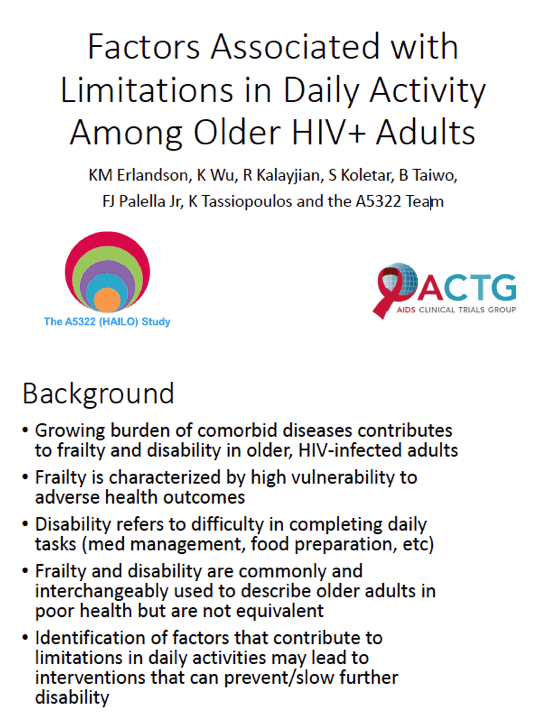
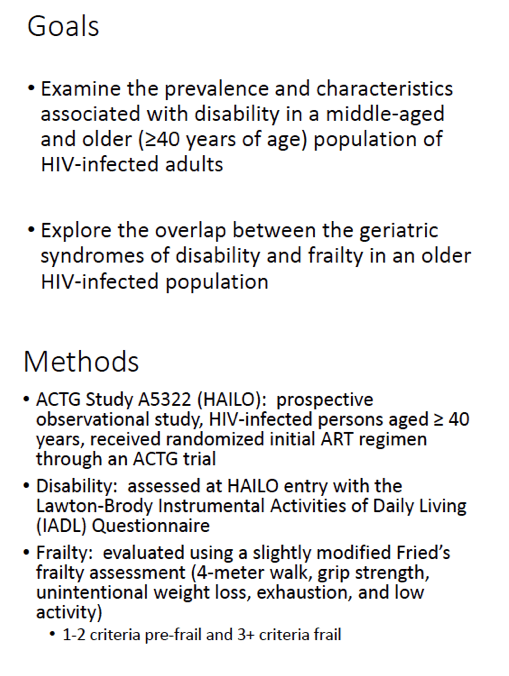
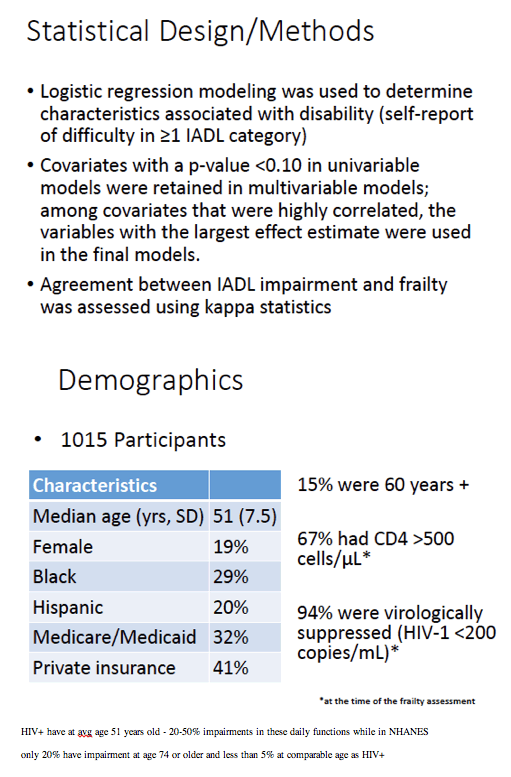
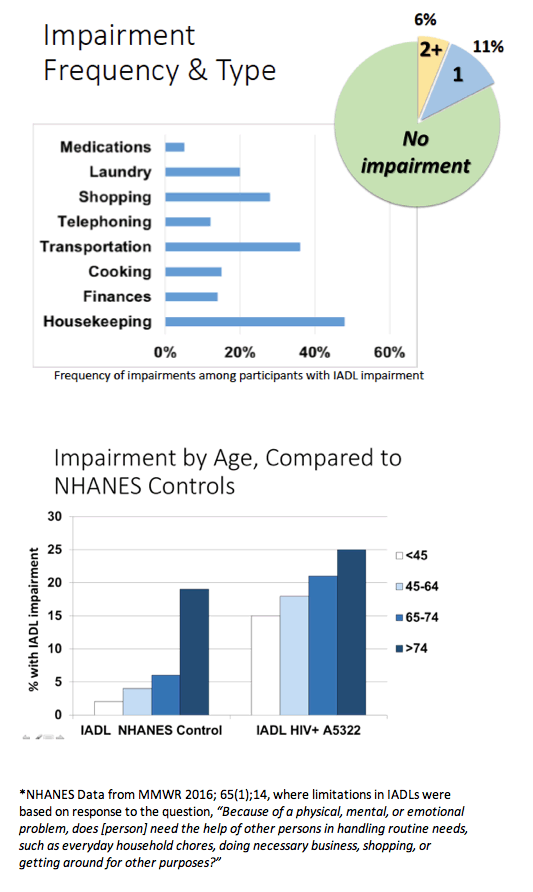
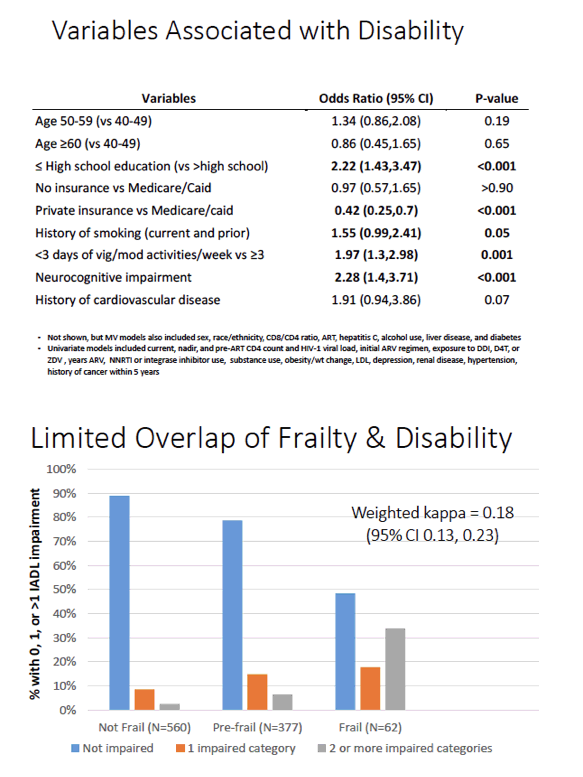
Although the terms are often used interchangeably, the concepts of frailty and disability are distinct, with unique contributing factors and interventions for treatment and prevention12. As such, we have demonstrated that although IADL impairment was more common with increasing frailty, nearly 50% of frail individuals did not have IADL impairments while IADL impairments were seen in 11% of non-frail participants. Furthermore, although similar characteristics were significant predictors of both frailty and disability (e.g. insurance, education, physical activity, neurocognitive impairment) other characteristics that had predicted frailty17 were unrelated to disability. A recent emphasis on use of the International Classification of Function to define disability across international clinical and research settings provides a similar distinction between concepts of "activity limitation" (as might be seen with grip and gait components of the frailty definition) and "participation restriction" (including limitations in IADLs), where restrictions are moderated by an individual's ability to respond to those deficits within the individual's environment13-15.
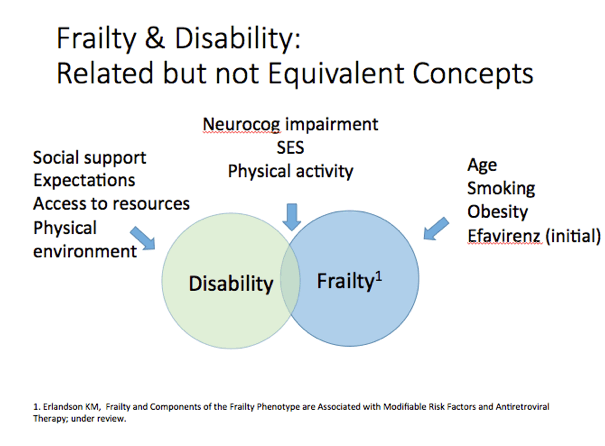
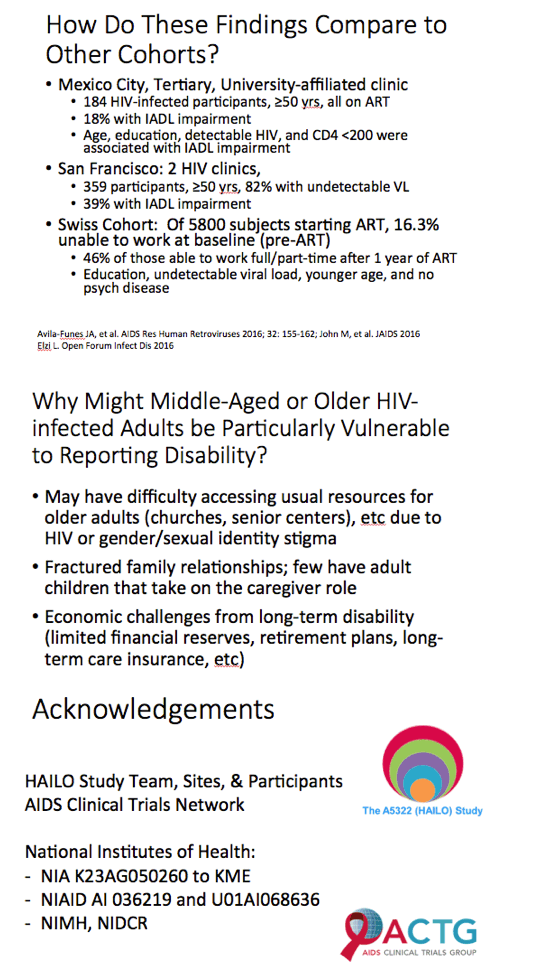
|
| |
|
 |
 |
|
|